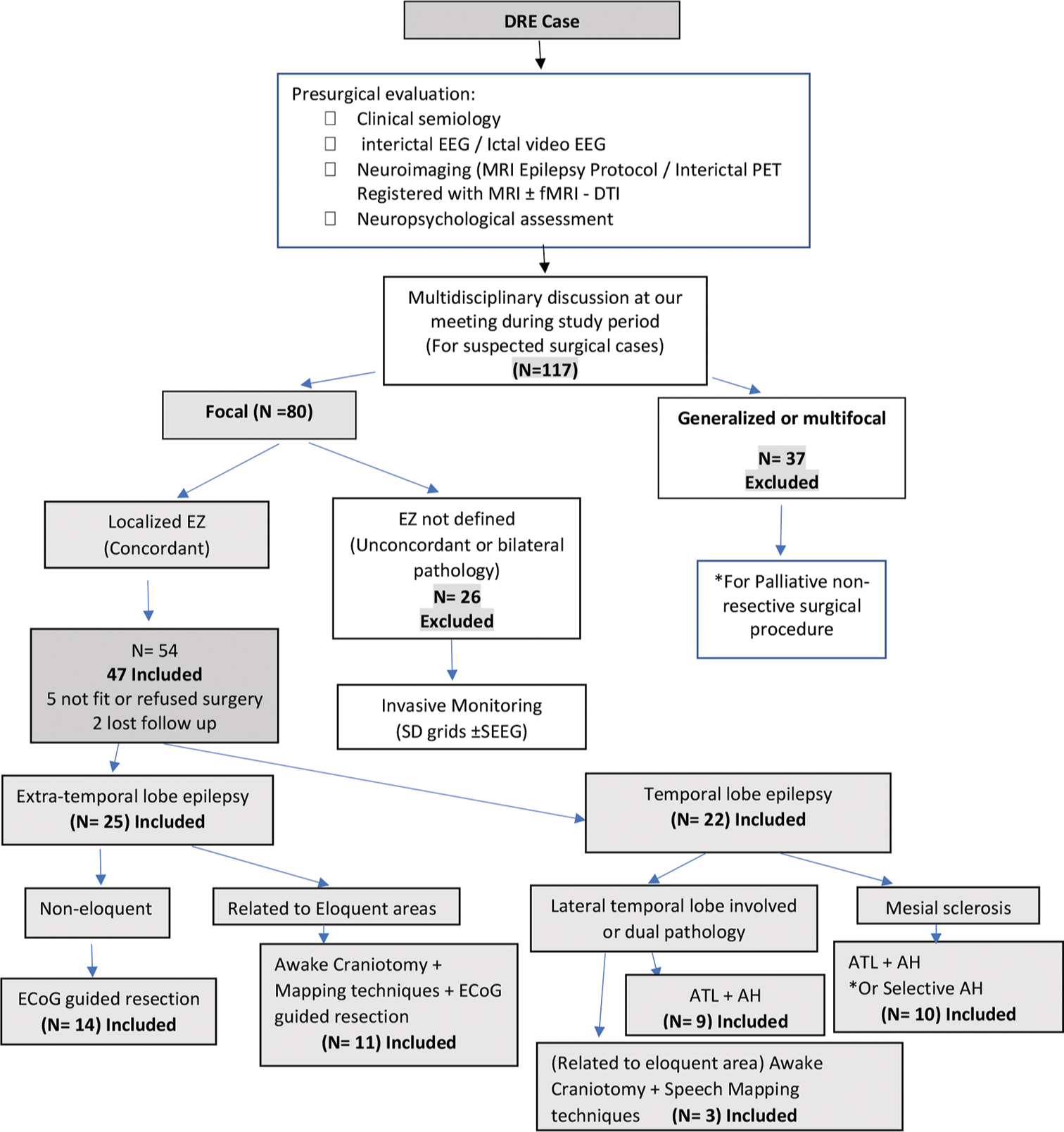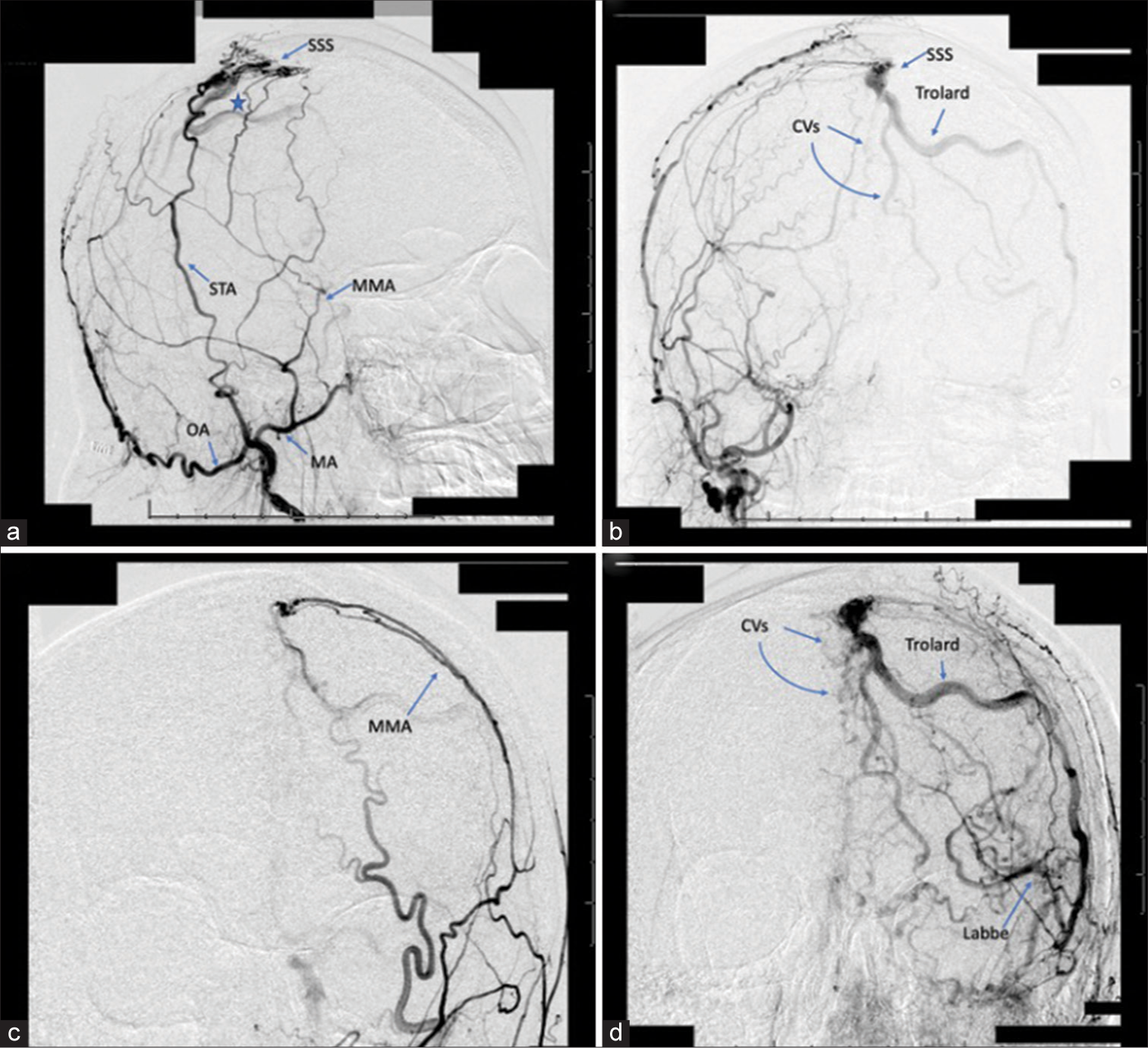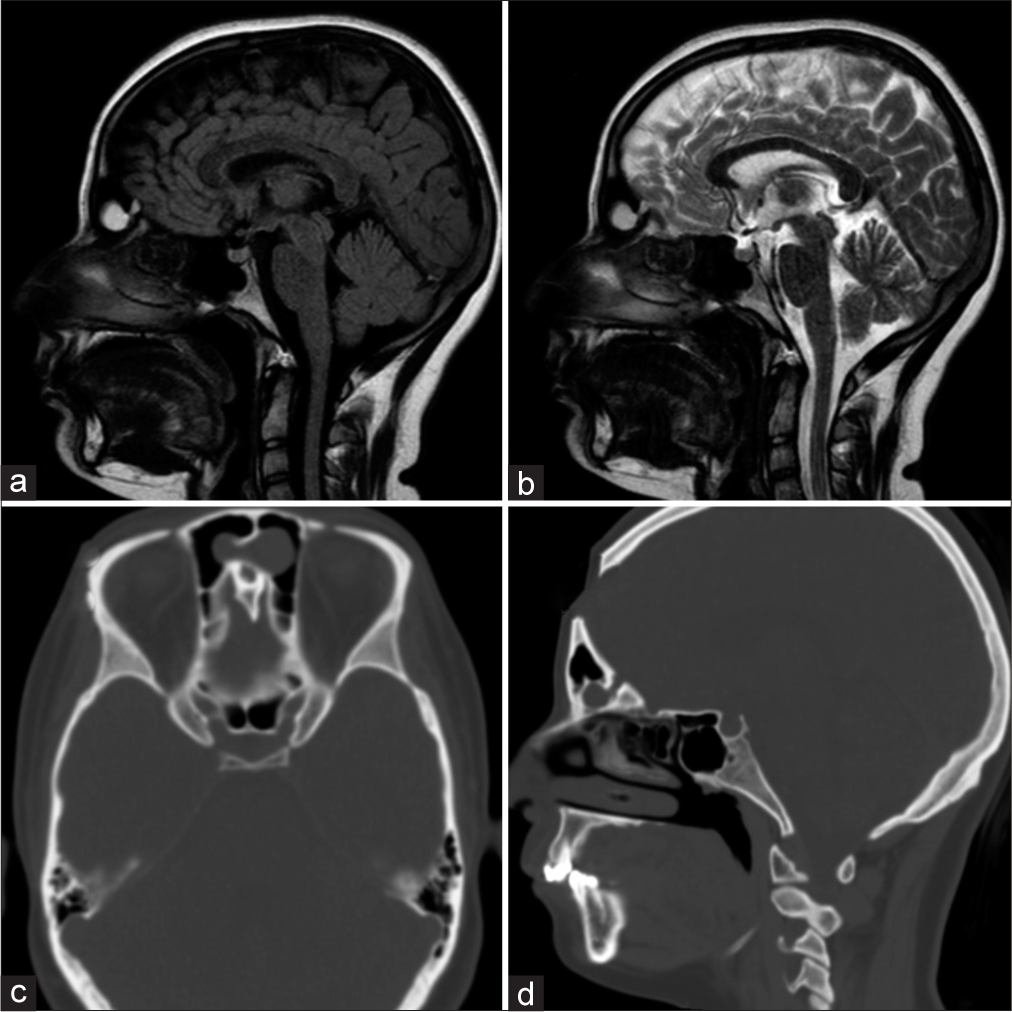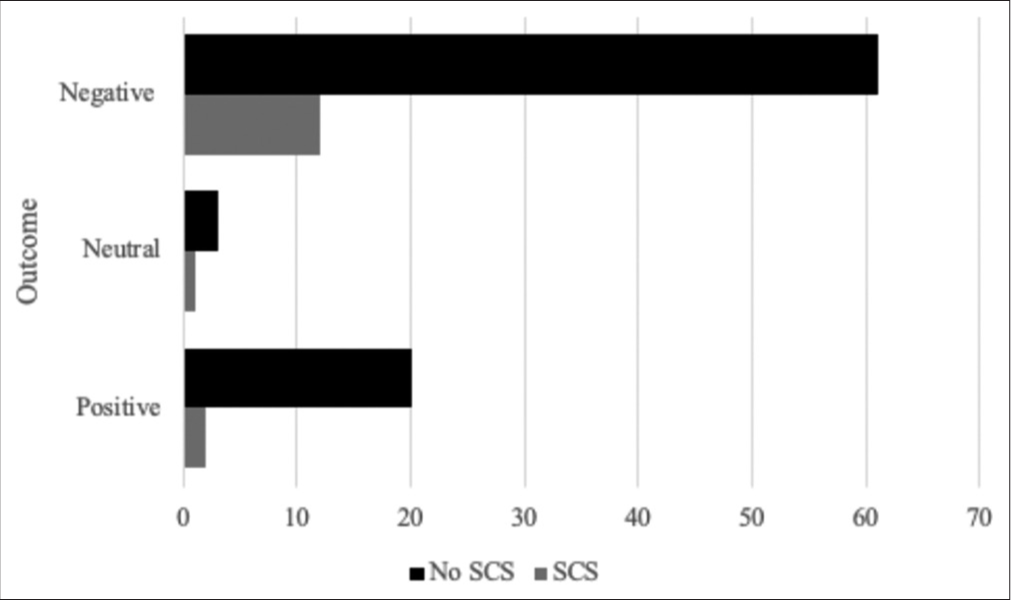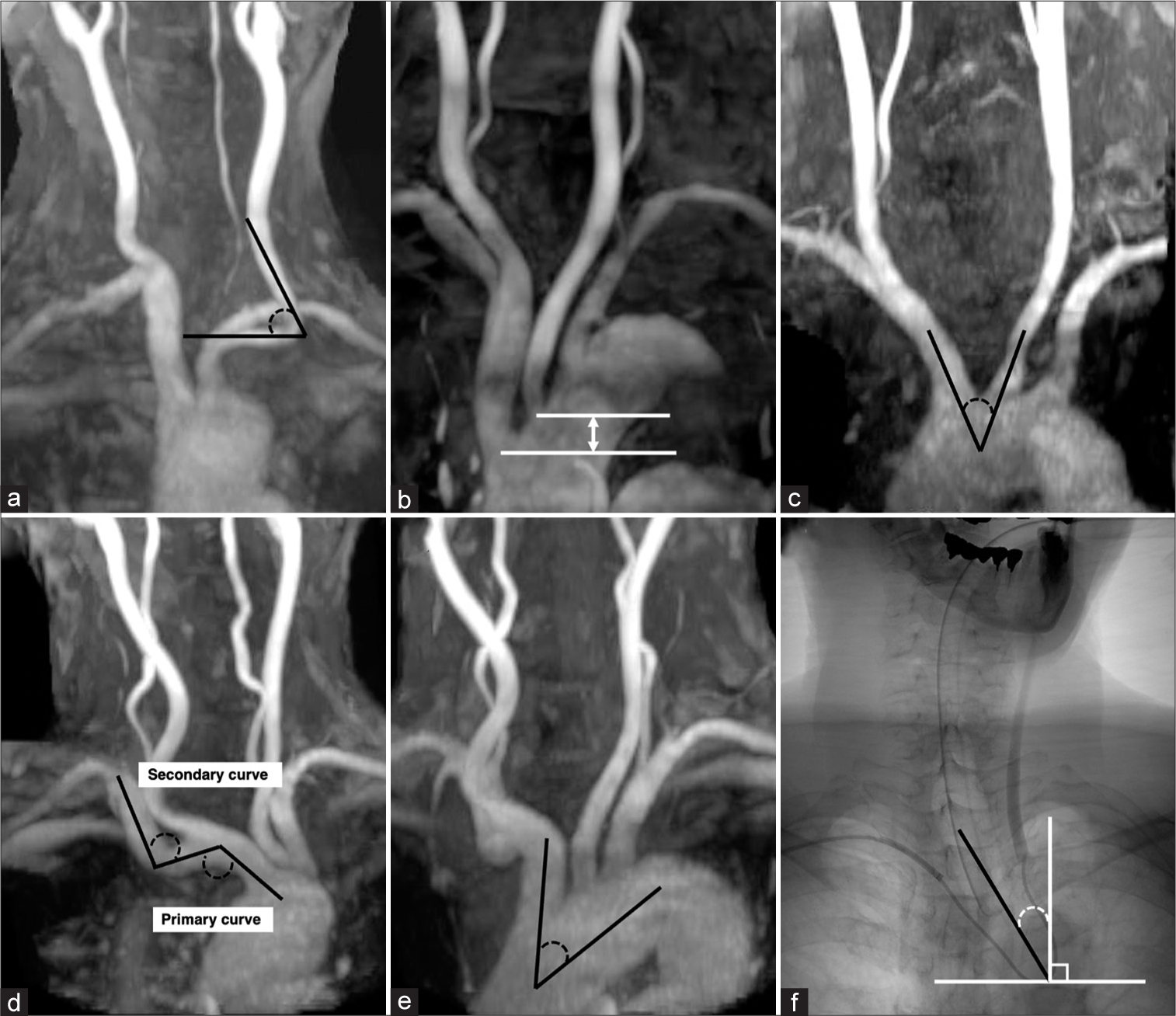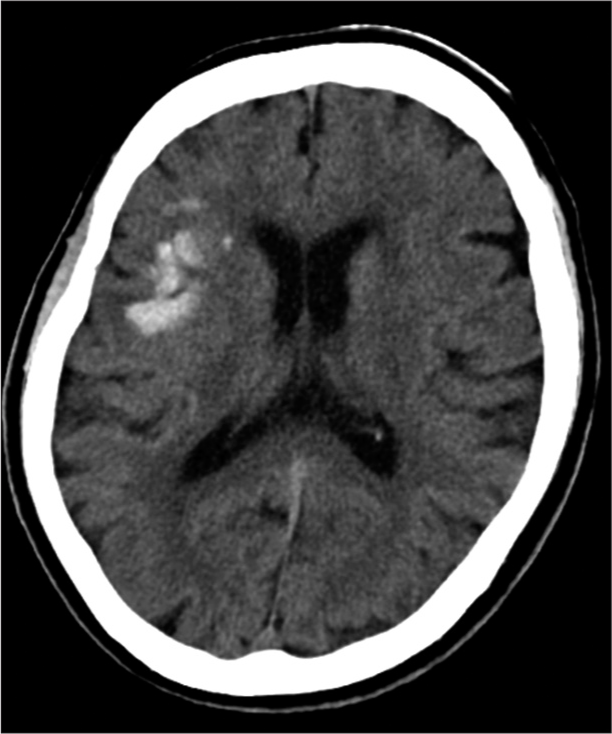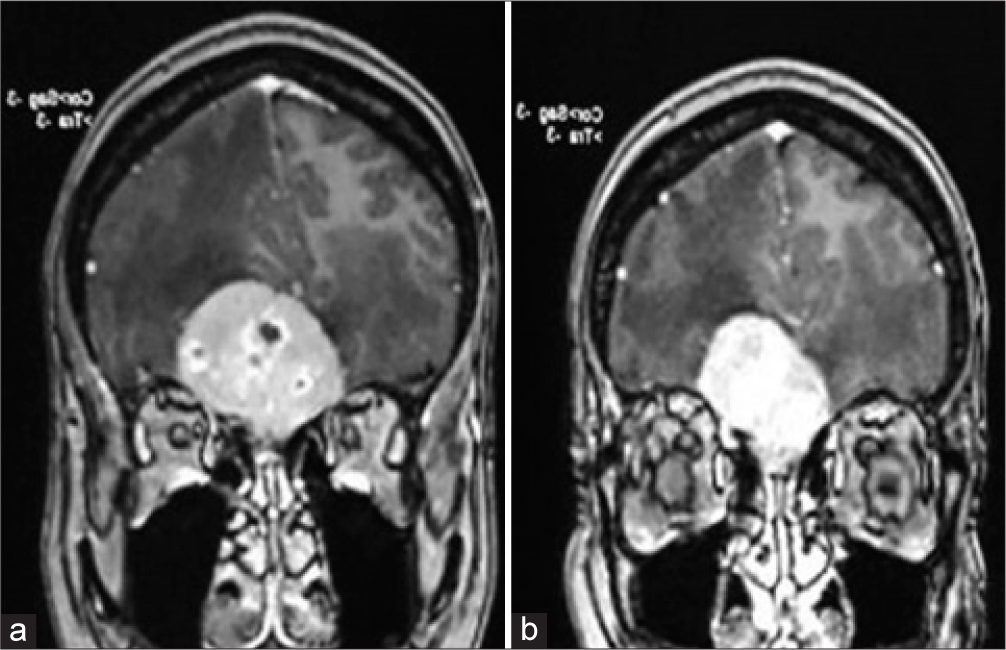Resective epilepsy surgery in a limited-resource settings: A cohort from a multi-disciplinary epilepsy team in a developing country
Date of publication: 14-Jul-2023
Background: Multidisciplinary pre-surgical evaluation is vital for epilepsy surgery decision and outcomes. Resective epilepsy surgery with assisted monitoring is currently a standard treatment for focal drug resistant epilepsy (DRE). In resource-limited countries, lack of epilepsy surgery center is a huge challenge. We presented and illustrated how to create a multidisciplinary protocol with resource-limited settings in a developing country and epilepsy surgery outcome using brain mapping and monitoring techniques for ensuring satisfactory resection.
Spontaneous closure of a superior sagittal sinus dural arteriovenous fistula with an extensive angioarchitectural network: A case report and systematic review of the literature
Date of publication: 07-Jul-2023
Background: Intracranial dural arteriovenous fistulas (DAVFs) have been documented to occasionally spontaneously regress. However, the mechanism responsible for this occurrence remains speculative.
Transglabellar resection of frontal sinus cholesterol granuloma extending cranially through cecum foramina: Technical note
Date of publication: 07-Jul-2023
Background: Cholesterol granuloma (CG) commonly occurs in the petrous apex; their occurrence in the anterior cranial fossa CGs is rare. Subfrontal approaches are the conventional surgical approaches for the resection of midline lesions of the anterior cranial fossa and frontal sinuses. In this article, we describe a successful minimally invasive approach for resection of a small midline anterior cranial fossa CG.
Professor Samuila Sanoussi, the fighter
Date of publication: 07-Jul-2023
Trascallosal bilateral transforaminal resection of a solid partially calcified colloid cyst: 2D operative video
Date of publication: 07-Jul-2023
Background: Colloid cysts are benign lesions of the roof of the third ventricle, often diagnosed incidentally; sometimes they can cause hydrocephalus due to obstruction of the foramina of Monroe. Symptomatic cysts could be resected either microsurgically (transcallosal or transcortical) or endoscopically. Although both strategies are effective and have advantages and disadvantages, there is no consensus on the choice of the optimal approach. Transcallosal resection, although more invasive than endoscopy, allows adequate bimanual manipulation of the cyst and is associated with high rates of complete resection, the use of neuronavigator and intraoperative ultrasound optimizes surgical trajectory and improves safety of the procedure with complication rates comparable to endoscopy. Endoscopy is less invasive but complete resection of solid cysts can be challenging.
Efficacy of continuous electroencephalogram for the management of altered mental status in the neurosurgical intensive care unit
Date of publication: 07-Jul-2023
Background: Continuous electroencephalograms (cEEGs) are often used in the neurosurgical intensive care unit (NSICU) to detect subclinical seizures (SCSs) in patients with altered mental status (AMS). This retrospective study evaluated the efficacy of this approach for improving patient outcomes.
Female monozygotic twins with sacral myelomeningocele
Date of publication: 07-Jul-2023
Background: Concurrent myelomeningocele in twins is a rare clinical presentation, only reported twice in Nigeria.
Predicting difficult transradial approach guiding into left internal carotid artery on unruptured intracranial aneurysms
Date of publication: 07-Jul-2023
Background: The transradial approach (TRA) is less invasive than the transfemoral approach (TFA), but the higher conversion rate represents a drawback. Among target vessels, the left internal carotid artery (ICA) is particularly difficult to deliver the guiding catheter to through TRA. The purpose of this study was thus to explore anatomical and clinical features objectively predictive of the difficulty of delivering a guiding catheter into the left ICA via TRA.
Cavernous sinus dural arteriovenous fistula treated with transvenous embolization through facial vein: A case report
Date of publication: 07-Jul-2023
Background: Although the inferior petrosal sinus (IPS) is the most common approach route for transvenous embolization (TVE) of cavernous sinus dural arteriovenous fistulas (CSDAVFs), other routes should be chosen in cases which the IPS is occluded. We report a case in which the superior ophthalmic vein (SOV) approach through the facial vein (FV) was the first choice to achieve radical cure of a hemorrhage-onset CSDAVF.
Olfactory groove monophasic sinovial sarcoma and von Recklinghausen’s disease: A case report and literature review
Date of publication: 07-Jul-2023
Background: Soft-tissue sarcomas are a rare and diverse group of neoplastic lesions. They represent only 1% of malignant tumors in adults and 15% in children. Synovial sarcoma (SS) is a type of soft-tissue sarcoma, accounting for 5–10% of cases, and commonly affecting extremities. Diagnosis, treatment, and prognosis remain challenging especially when localized in uncommon areas, such as intracranial lesions.


